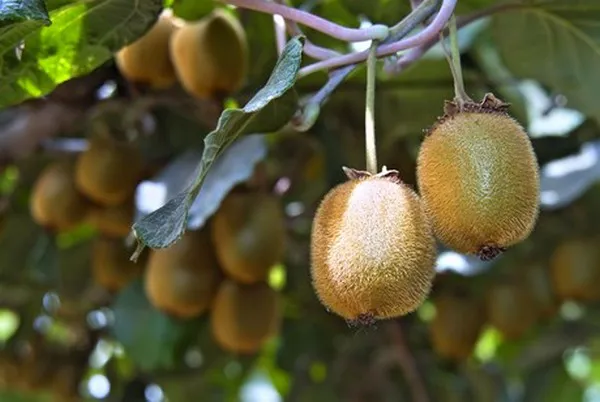Supplies of kiwi from Chile are good though not as ample perhaps as normal.
“Normally Chile gets going with kiwi in late-March to early April and by the time we get to early May, the market settles in,” says Roland Berndt of Sierra Produce based in Orange, CA. “This year has been different. The market started off at the beginning of April at a particular price point and it hasn’t really moved downward at all due to the lack of fruit coming into the market.”
Berndt notes the lack of fruit is likely related to COVID-19. “It has probably scared some exporters and importers as well. They don’t want to bring fruit in and see what happens, so the conservative side says they’re going to hold back. As a result, we’ve probably seen a little less volume hit our market,” says Berndt. “So, the market is pretty stable.”
Smaller crop size
Overall, though, the crop from Chile is down slightly. “It’s maybe down 10 percent,” says Berndt. “Part of that could be the that the sizing is a bit smaller. With smaller sizing, you probably harvest a few less kilos and pack a few less boxes.”

Also, out of the Southern Hemisphere, Berndt says New Zealand hasn’t fully started yet but there are some shipments on the water. Supplies from the Northern Hemisphere are almost all wrapped up—Italy is finished while some California fruit is still shipping. Southern Hemisphere fruit ships until the end of September when supplies switch back over to the Northern Hemisphere.
As for demand, Berndt notes it hasn’t changed from the beginning of April to date. “It’s fairly strong but that’s driven a little bit by the numbers that are available,” he says. “As far as demand from customers, there’s probably less because we’re missing the foodservice and institutional business we normally have. They generally take the middle to small-sized fruit.”
Developments at retail
At the same time, retail business is the same or up slightly. “All the produce is being pushed through retail. However, kiwis aren’t considered an essential item, so some retailers have kept their displays back. They’re carrying them but it’s not at the forefront,” says Berndt, adding that press around the connection between kiwis and Vitamin C as a health benefit has also helped retail demand.
As for pricing, Berndt notes that East Coast pricing is $20-$21 (20 series); $18-$19 (30-33 series); $17-$18 (36-39 series). West Coast pricing is similar. “Last year the market was a dollar or two less by size. Normally May and June are a bit more aggressive by price,” he says. “In comes in strong in April, levels off in May and June and then by the end of July to early August, you start to see the controlled atmosphere kiwis come in and they have higher costs.”
Looking ahead, Berndt doesn’t anticipate much change in the coming weeks. “However sometimes if there’s a certain market in the world that looks attractive, exporters, their first reaction is to ship more to that market,” says Berndt. “We don’t know what the exporters are thinking and what their options are in the world market. I’d expect the market to soften up a bit but not for a couple of weeks.”
For more information:
Roland Berndt
Sierra Produce
Tel: +1 (657) 229-6100
rolandb@sierraproduce.com
www.sierraproduce.com
